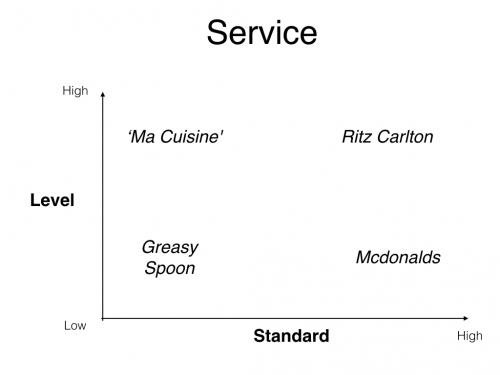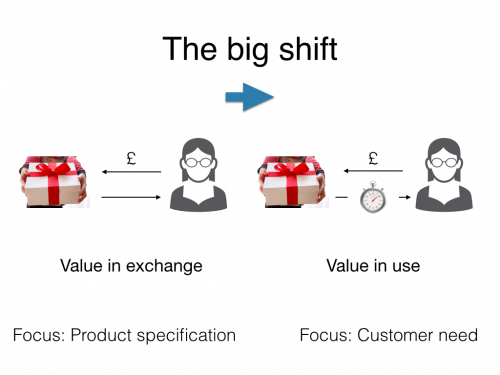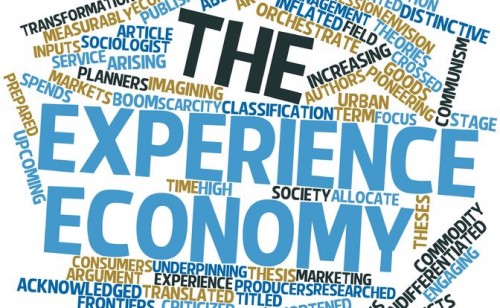
The holy grail of Service Design is the much-talked customer experience, but as I have tried to argue in the past few blog posts, if you just paste the elements of Service Design thinking over a terrible employee experience, you are just spray-painting your rusty car in the hope that no one will really notice. Once you hit a bump, the mudguard will still come off.
Culture evolves over time. Sometimes, it just gets better and better but very often it just slowly deteriorates.
If you have ever been part of a start-up or a hotel or restaurant opening, you know what I am talking about. We started out with fantastic intentions and this one-for-all and all-for-one spirit and…
Well then something just happened.
What happened is nothing.
Nothing… in the sense that nobody actively did anything to maintain the culture. Just think of any type of strong culture that you are part of or have been part of. What keeps the culture alive are rituals, conversations and most importantly, someone who calls it when we step outside of boundaries of the culture.
But in our very busy day-to-day lives, we are typically always working on the systems and the behaviour, creating new processes, initiating training programs, all of the tangible stuff. We forget that we need to maintain and reinforce the culture, and maybe that is the most important job of all.
“Our culture is how we work together as employees to serve our members and grow. Our culture has been instrumental to our success and we keep improving it; our culture helps us attract and retain stunning colleagues; our culture makes working here more satisfying”
– Netflix
What does it take to maintain or even correct the current culture?
Culture does not emerge out of thin air. Culture is the sum of our action, behaviours and conversations.
What we do and how we do it is our culture.
So we are already working on it but possibly not fully aware of how what we do influences the culture.
Don’t confuse action with movement
Great cultures are characterized by their bias-to-action, including taking corrective actions when it is needed. What is typical about rotten cultures is that nobody takes action when it is obviously called for; they do nothing and slowly the culture starts to disintegrate or become toxic. The classic dilemma here is always the brilliant jerks. Bad cultures tolerate them. By tolerating the jerks, leadership shows what their true values are.
In my experience, bad managers are not so often bad because of what they do, it is what they don’t do that makes them bad. There is no action when it is called for.
Do as I say, not as I do!
Some managers think that is a great joke. But it is a terrible thing to say. If you are a manager, you are always under observation. People observe you in order to try and understand their future. They are searching for clues as to what is going to happen and what is important. They don’t pay attention to what you say, they watch your behaviour. Who do you talk to? What meetings do you attend? What projects are you interested in? How you do what you do makes up the clues they use to navigate by.
Many organisations try to regulate behaviour through rules. As time goes, they grow and add more people. Obviously from time to time, somebody does something that is not acceptable and they add a new rule for everybody. The weaker the culture, the more rules they add. In a strong culture, there is very little need for rules because it is easy for people to work out for themselves what is the right thing to do. And if someone makes a wrong judgement then we have a chat about it to help them see why this is not part of how we do things around here.
Change the conversation and you change the culture.
We become what we talk about. Our conversations make up the glue of our relationships but they also weave the fabric of our culture. If we are always trying to work out who to blame or whose fault something is then we become a drama culture. On the other hand, if we are always asking “What can we do about this?”, we create a culture that focuses on opportunities and possibilities. In the end, there is a world of difference in productivity and engagement.
But it’s not just the subject of our conversations that shape the culture, it is also the quality and the frequency. Solid cultures typically have strong, candid and frequent conversations with each other. Robust feedback is considered essential to healthy relationships. Wishy-washy performance reviews once a year are not part of the fabric of strong cultures
In toxic cultures, people don’t talk to each other about what really matters. They are constantly trying to protect themselves and play cover up. And endless dance in the drama triangle.
No matter how many fantastic new service strategy programs you initiate, they will fail if they are built on a dysfunctional culture. Culture beats strategy every time.
If you are not familiar with the intricacies of the Service Profit Chain, check out my course here
Why the Service Profit Chain is more important now than ever before



 We talk a lot about the customer experience. We even talk about an experience economy. But what do we actually mean, and when can we qualify something as an experience?
We talk a lot about the customer experience. We even talk about an experience economy. But what do we actually mean, and when can we qualify something as an experience?
